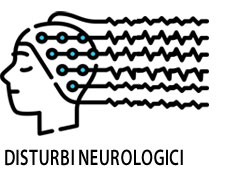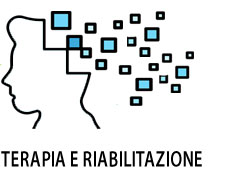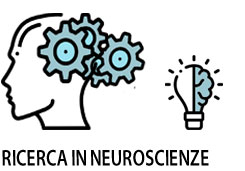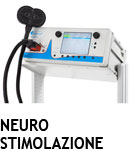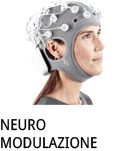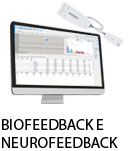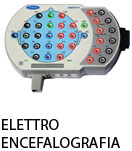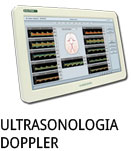- +39 011 5821948
- info@geasoluzioni.it
- Lun - Ven 8:00 - 17:00
Testing the therapeutic effects of transcranial direct current stimulation (tDCS) in semantic dementia: a double blind, sham controlled, randomized clinical trial
- Abstract:
- Abstract Background Semantic dementia is a neurodegenerative disease that primarily affects the left anterior temporal lobe, resulting in a gradual loss of conceptual knowledge. There is currently no validated treatment. Transcranial stimulation has provided evidence for long-lasting language effects presumably linked to stimulation-induced neuroplasticity in post-stroke aphasia. However, studies evaluating its effects in neurodegenerative diseases such as semantic dementia are still rare and evidence from double-blind, prospective, therapeutic trials is required. Objective The primary objective of the present clinical trial (STIM-SD) is to evaluate the therapeutic efficacy of a multiday transcranial direct current stimulation (tDCS) regime on language impairment in patients with semantic dementia. The study also explores the time course of potential tDCS-driven improvements and uses imaging biomarkers that could reflect stimulation-induced neuroplasticity. Methods This is a double-blind, sham-controlled, randomized study using transcranial Direct Current Stimulation (tDCS) applied daily for 10 days, and language/semantic and imaging assessments at four time points: baseline, 3 days, 2 weeks and 4 months after 10 stimulation sessions. Language/semantic assessments will be carried out at these same 4 time points. Fluorodeoxyglucose positron emission tomography (FDG-PET), resting-state functional magnetic resonance imaging (rs-fMRI), T1-weighted images and white matter diffusion tensor imaging (DTI) will be applied at baseline and at the 2-week time point. According to the principle of inter-hemispheric inhibition between left (language-related) and right homotopic regions we will use two stimulation modalities - left-anodal and right-cathodal tDCS over the anterior temporal lobes. Accordingly, the patient population (n = 60) will be subdivided into three subgroups: left-anodal tDCS (n = 20), right-cathodal tDCS (n = 20) and sham tDCS (n = 20). The stimulation will be sustained for 20 min at an intensity of 1.59 mA. It will be delivered through 25cm2-round stimulation electrodes (current density of 0.06 mA/cm2) placed over the left and right anterior temporal lobes for anodal and cathodal stimulation, respectively. A group of healthy participants (n = 20) matched by age, gender and education will also be recruited and tested to provide normative values for the language/semantic tasks and imaging measures. Discussion The aim of this study is to assess the efficacy of tDCS for language/semantic disorders in semantic dementia. A potential treatment would be easily applicable, inexpensive, and renewable when therapeutic effects disappear due to disease progression.
- Patologie/Applicazioni:
- Anno:
- 2019
- Tipo di pubblicazione:
- Articolo
- Parola chiave:
- stimolazione elettrica transcranica; demenza frontotemporale; double blind; sham
- Testata scientifica:
- BMC
- Nota:
- Lo scopo di questo articolo è presentare un protocollo clinico ("STIM-SD") che implementa un regime tDCS di più giorni in una vasta popolazione di pazienti con SD (demenza semantica) (n = 60) mirando specificamente all'ATL sinistro (con stimolazione anodica) o l'ATL destro (con stimolazione catodica) per fornire prove di potenziali effetti terapeutici e plasticità cerebrale in pazienti che soffrono di demenza semantica anche dopo la durata del trattamento. Lo studio è randomizzato in doppio cieco, controllato con sham, che verifica l'efficienza delle sessioni periodiche di tDCS per 10 giorni (dal lunedì al venerdì per 2 settimane) utilizzando valutazioni linguistiche / semantiche e neuroimaging basato su PET e MRI in quattro fasi temporali: basale e dopo 3 giorni, 2 settimane e 4 mesi dopo la fine delle sessioni di tDCS. La popolazione di pazienti viene assegnata casualmente a tre sottogruppi ciascuno dei quali riceve un trattamento diverso rispetto all'ATL (lobo temporale anteriore): tDCS anodico sinistro (n = 20), tDCS catodico destro (n = 20) e tDCS sham (n = 20). La stimolazione viene sostenuta per 20 minuti ad un'intensità di 1,59 mA ed erogata attraverso elettrodi di stimolazione rotondi da 25 cm2 (densità di corrente di 0,06 mA / cm2) posizionati rispettivamente sui lobi temporali anteriore sinistro e destro per la stimolazione anodica e catodica (Sponstim 25cm2). Un approccio computazionale alla modellistica dovrebbe consentire di definire se e in che modo l'ampiezza e la distribuzione attuali del TDC nelle teste degli individui possano differire e in che modo queste differenze influenzeranno gli esiti clinici.
- DOI:
- https://doi.org/10.1186/s13063-019-3613-z
Hits: 2382
La nostra storia
GEA soluzioni si affaccia nel 2013 al mercato della strumentazione medicale di alto livello tecnologico ma la sua storia parte da più lontano, clicca qui per approfondire.
GEA SOLUZIONI SRL
via Spalato 72/A, Torino
Tel.: 011 5821948 / 011 4463853
Fax: 011 0433281
Email: info @ geasoluzioni.it
P. IVA IT11696920013
REA TO1233648

